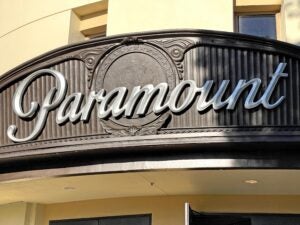 Recent Eyeblaster research led by Ariel Gelfman looked at conversions from more than 10 billion impressions and showed that their are correlations between online and offline buying habits. Read the release.
Recent Eyeblaster research led by Ariel Gelfman looked at conversions from more than 10 billion impressions and showed that their are correlations between online and offline buying habits. Read the release.
Geifman discussed the research with AdExchanger.com.
AdExchanger.com: In the release about your eCommerce report you say, “This research also highlights the unique potential of addressable advertising in making digital channels even more effective conversion producers.” Can you drill down a bit here? What is the link you see in the research to audience buying in digital?
AG: Digital affords the ability to uniquely target users unlike other channels such as traditional out of home and even TV. The research points out that online advertising drives high conversions in tandem with spikes in offline retail figures. Audience buying can become an invaluable tool for advertisers. If advertisers can reach consumers via online display while in the midst of the buying decision, they can persuade them to buy their product and not the competitor’s. With addressable advertising becoming more widely adopted by marketers, users experience more relevant advertising and this is expected to increase online conversions and grow digital display as a direct response medium. The ability to target the right audience and eliminate wasted impressions will improve ROI and increase user response online. Ultimately, this will drive sales and activity on E-commerce sites.
Any thoughts as to why your research showed conversions reaching their all time high on the Monday following Christmas? What might be the consumer’s thought process?
Customers have matured, and are not making the online/off-line distinction anymore. Some consumers are still waiting at the door of the store in early hours of Black Friday, and some are aggressively checking for online bargains on Cyber Monday. The spike in conversions follows the same shopping patterns seen in the brick and mortar retailers – a strong response to after-Christmas sales. E-commerce stores are using similar tactics online as offline stores do to lure consumers. It’s evident that shoppers, especially after Christmas, are programmed to expect sales and research confirms that consumers consider online on the same playing field as store front retailers. The same habits occurred on the other notable high volume shopping days such as Cyber Monday and the last few days leading up to Christmas. Similar patterns also existed on low-volume shopping days such as Thanksgiving, Christmas Eve and Christmas Day.
Can you infer an audience here?
Eyeblaster tracks users who have seen one of the ads that was served by Eyeblaster and then went to the retailers website. Ads appear in myriad of environments, from high-end financial websites through news outlets and gaming sites. Retailers are already targeting their offers to the right audience on the websites, so if Macy’s is having a sale on handbags, it would select the appropriate placements for its ads. The point here is that online display advertising is ubiquitous and can serve any industry and any audience, as long as you pick the right media.
Given the ad creative’s (ad banner for example) importance in the targeting/optimization process, how can technology better tap the minds of the creative in the agency, for example? And visa versa?
AdExchanger Daily
Get our editors’ roundup delivered to your inbox every weekday.
Daily Roundup
Some creative directors look at innovations in digital creative and think their jobs have been watered down to multi-variate testing.
While there are a lot of variables influencing the performance of ads, such as placement, format, the use of video, etc., the creative itself is of great importance. While it may seem that with the robust analytics that companies like Eyeblaster offer, advertising has become a science, it is still very much an art. Nevertheless, creative directors now have the advantage that they can draw insights on what works and what doesn’t from the data to make better ads. For example, eMarketer highlighted recent research confirming that rollover initiated video works better than videos that are initiated by click. Insights like these can be incorporated into creatives to improve online advertising.
By John Ebbert












